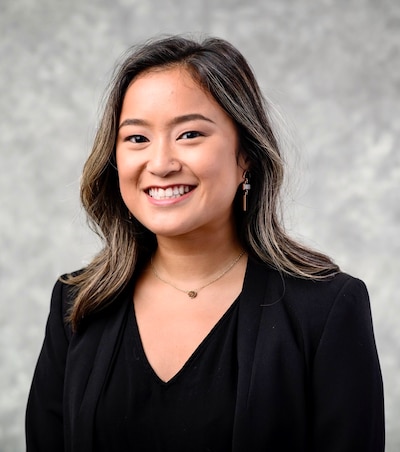In grade school, Asian history was relegated to a screening of “Mulan” and a class party with Chinese takeout. I took pride in being likened to the female warrior who saved all of China, but I couldn’t escape the perception of being foreign or ‘other.’ “They don’t understand me because I’m Asian,” I told my dad when I was just 8.
At my high school in Normal, Illinois, where about 200 of the 2,100 students were Asian, my identity crisis worsened. So far as I remember, we never learned about Southeast Asian refugees, like my dad, who fled Vietnam as a teenager in 1969, or about any Asian historical figures. I didn’t even scratch the surface until I left for college, where I minored in Asian American studies.
In college, I learned about the Chinese migrants who built the transcontinental railroad from 1863 to 1869 and about the Chinese Exclusion Act of 1822, the only U.S. law banning immigration based on ethnicity. I soon realized just how little I knew of those who had come before me. Asians are the second fastest-growing demographic in the nation, but public schools like the one I attended often gloss over — or completely bypass — Asian history.

An Illinois bill, introduced in February by the Chicago-based organization Asian Americans Advancing Justice, would require the state’s public schools to teach Asian American history starting next year. The legislation comes amid rising levels of racism against Asians during the pandemic. Since March 2020, Stop AAPI Hate received 3,795 reports of incidents targeting Asians. According to a study from California State University at San Bernardino, reports of anti-Asian hate crimes surged nearly 150% in the past year. Less than 24 hours after a man shot and killed eight people in Atlanta, six of them women of Asian descent, the Illinois committee for curriculum and education policies approved the Teaching Equitable Asian American Community History Act, or TEAACH. The Illinois House of Representatives is set to cast its final vote on the bill by the end of May.
Growing up, the erasure of Asian history and culture gnawed at me. How was I to know what was missing if I’d never learned it in the first place? With little sense of history to ground my identity, I grappled with what it meant to be Asian American — a paradox that felt like two distinct worlds; I didn’t quite feel like I belonged in either of them.
Noreen Naseem Rodríguez, a professor of elementary social studies at Iowa State University, said when school children do learn about Asian culture, it’s conveyed only as it affects white communities. “We’re viewed as outsiders or threats to the nation — whether it’s as enemy aliens or as invading perils or disease hordes,” she said. “We drastically need to change all of it because we’re not telling the story of America. We’re just not.”
Rodríguez, who has helped create K-8 Asian American studies curriculums for public schools, said Asian Americans receive the least attention in school curriculum and mainstream textbooks compared to other racial and ethnic groups. A 2010 analysis of 28 introductory U.S. history textbooks confirms the data. Tokyo researcher Okiyoshi Takeda found Asian American leaders came up in just 15% of the texts, and fewer than 3% described them as heroes, nation-builders or “change agents.”
In the rare instances Asian Americans were included, they were typically depicted as “victims” or “contributors” to white society. The descriptions help mold the myths of Asian Americans as both model minority and forever foreign; as outsiders, once barred from immigrating to the U.S, and as compliant laborers, helping to build railroads for wealthy, white passengers.
This is what’s packaged and taught to students — if, that is, Asian Americans are mentioned at all. Still, my teachers failed to mention the Immigration Act of 1924, which banned immigration from Asia, or its subsequent 1965 reversal, which brought a wave of refugees, including my dad and uncle, into the country.
Asian American history should not be seen as just a minor footnote. If schools taught history that is reflective of the centuries-long struggle of Asians in America — people would realize the recent groundswell of hate is not a new phenomenon. “There’s a lot of shock and disbelief of ‘This is not who we are,’” Rodríguez told me. “But this is exactly who we have always been.”
In a speech to the Illinois curriculum and policies committee for education, Phong Nguyen, a senior at Chicago’s Lane Tech high school, pleaded with legislators to pass the TEAACH Act.
“I just want society to understand,” she said. “I want them to simply understand my community and me, the way I’ve spent almost 13 years of my life trying to adjust to and understand theirs. But how can people understand if they don’t learn?”
I had similar questions when I was in high school. At 15 years old, I even penned a letter to the editor of my town’s local newspaper, asking, “Why should we hate a certain group just because they have different beliefs or smaller eyes than us?”
Ignoring these questions in classrooms is no longer an option.
With anti-Asian hate on the rise in the U.S, schools can’t afford to fail another generation of students. They deserve to know the true story of America.
Kayla Huynh is an alumna of the University of Wisconsin—Madison and a graduate student at Northwestern University, where she is pursuing a master’s degree at the Medill School of Journalism.

